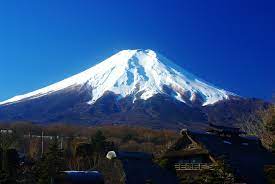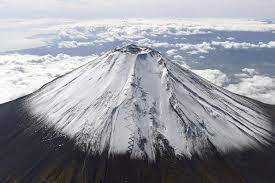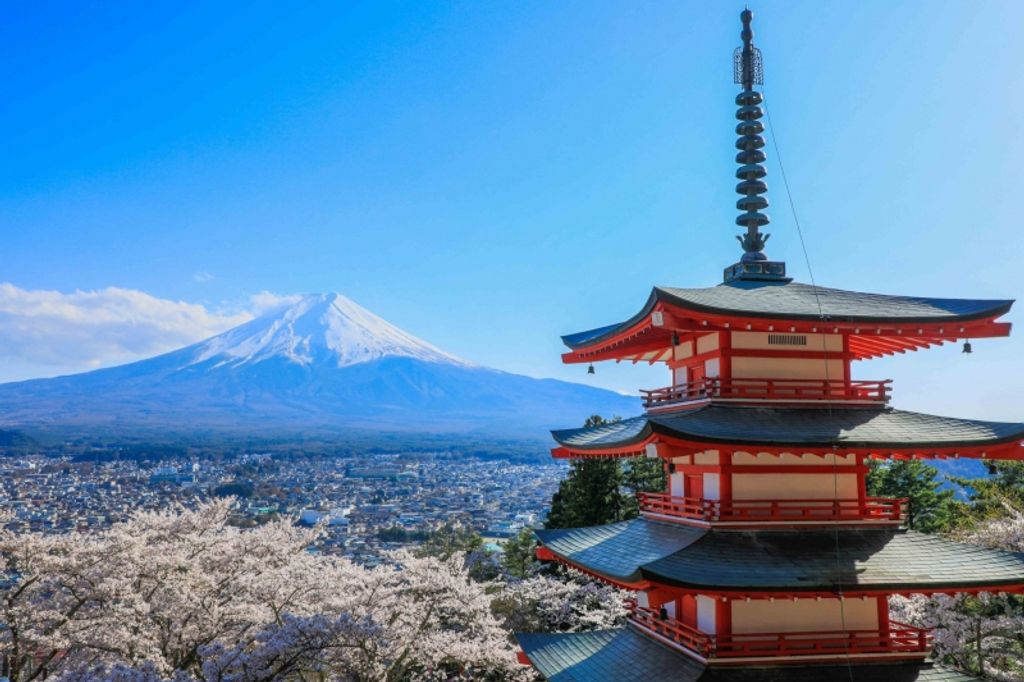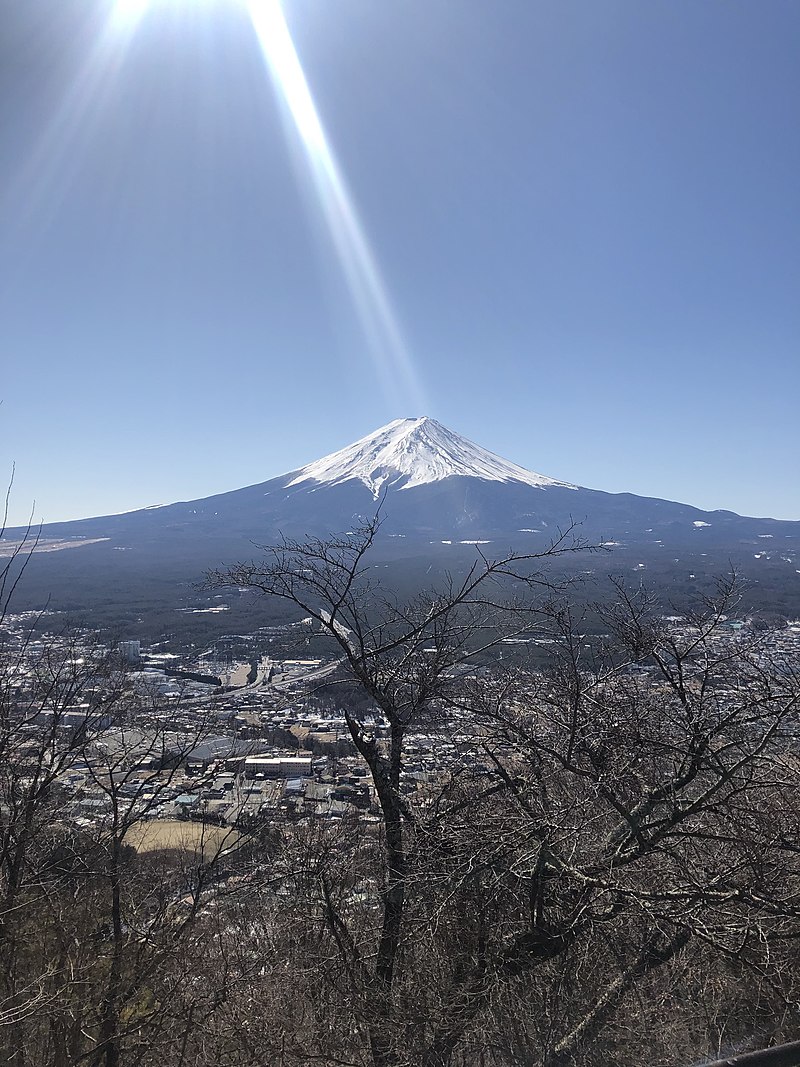Mount Fuji
Mount Fuji (富士山, Fujisan, Japanese: [ɸɯꜜ(d)ʑisaɴ] (About this soundlisten)), located on the island of Honshū, is the highest mountain in Japan, standing 3,776.24 m (12,389.2 ft). It is the second-highest volcano located on an island in Asia (after Mount Kerinci on the island of Sumatra), and seventh-highest peak of an island on Earth.Mount Fuji is an active stratovolcano that last erupted from 1707 to 1708.The mountain is located about 100 km (62 mi) southwest of Tokyo and is visible from there on clear days. Mount Fuji's exceptionally symmetrical cone, which is covered in snow for about five months of the year, is commonly used as a cultural icon of Japan and it is frequently depicted in art and photography, as well as visited by sightseers and climbers.
Mount Fuji is one of Japan's "Three Holy Mountains" (三霊山, Sanreizan) along with Mount Tate and Mount Haku. It is a Special Place of Scenic Beauty and one of Japan's Historic Sites.It was added to the World Heritage List as a Cultural Site on June 22, 2013.According to UNESCO, Mount Fuji has "inspired artists and poets and been the object of pilgrimage for centuries". UNESCO recognizes 25 sites of cultural interest within the Mount Fuji locality. These 25 locations include the mountain and the Shinto shrine, Fujisan Hongū Sengen Taisha, as well as the Buddhist Taisekiji Head Temple founded in 1290, later depicted by Japanese ukiyo-e artist Katsushika Hokusai.
Mount Fuji is an attractive volcanic cone and a frequent subject of Japanese art especially after 1600, when Edo (now Tokyo) became the capital and people saw the mountain while traveling on the Tōkaidō road. According to the historian H. Byron Earhart, "in medieval times it eventually came to be seen by Japanese as the “number one” mountain of the known world of the three countries of India, China, and Japan".The mountain is mentioned in Japanese literature throughout the ages and is the subject of many poems.
The summit has been thought of as sacred since ancient times and was forbidden to women until the Meiji era in the late 1860s. Ancient samurai used the base of the mountain as a remote training area, near the present-day town of Gotemba. The shōgun Minamoto no Yoritomo held yabusame in the area in the early Kamakura period.
The first ascent by a foreigner was by Sir Rutherford Alcock in September 1860, who ascended the mountain in 8 hours and descended in 3 hours.Alcock's brief narrative in The Capital of the Tycoon was the first widely disseminated description of the mountain in the West.Lady Fanny Parkes, the wife of British ambassador Sir Harry Parkes, was the first non-Japanese woman to ascend Mount Fuji in 1867.Photographer Felix Beato climbed Mount Fuji two years later.
Today, Mount Fuji is an international destination for tourism and mountain climbing.In the early 20th century, populist educator Frederick Starr's Chautauqua lectures about his several ascents of Mount Fuji—1913, 1919, and 1923—were widely known in America.A well-known Japanese saying suggests that a wise person will climb Mt. Fuji once in their lifetime, but only a fool would climb it twice.It remains a popular symbol in Japanese culture, including making numerous movie appearances,inspiring the Infiniti logo,and even appearing in medicine with the Mount Fuji sign.
As a national symbol of the country, the mountain has been depicted in various art media such as paintings, woodblock prints (such as Hokusai's Thirty-six Views of Mount Fuji and 100 Views of Mount Fuji from the 1830s), poetry, music, theater, film, manga, anime, pottery[72] and even Kawaii subculture.
Before its explosive eruption in 1980, Mount St. Helens was once known as "The Fuji of America," for its striking resemblance to Mount Fuji. Mount Taranaki / Mount Egmont in New Zealand is also said to bear a resemblance to Mount Fuji, and for this reason has been used as a stand-in for the mountain in films and television.



